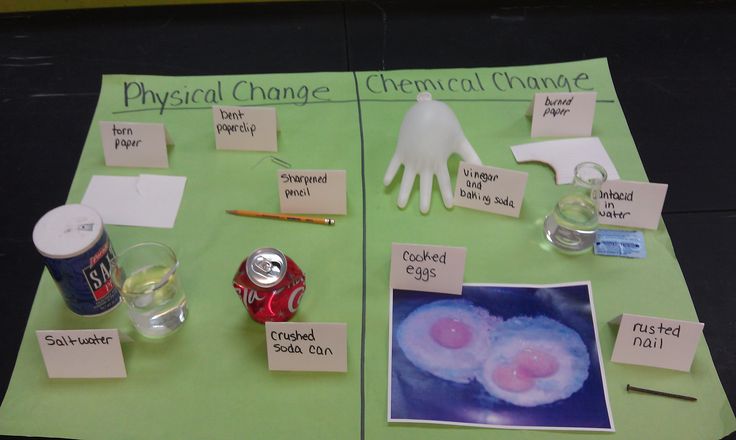Introduction:
As middle school students explore the world of science, it’s essential to engage them in hands-on activities that facilitate a deeper understanding of physical and chemical changes. These activities not only make science fun and engaging but also help in developing critical thinking skills. Here is a list of 27 physical and chemical changes activities for middle school students to experience these fascinating transformations firsthand.
1.Ice Melting: Students can investigate the process of melting by observing ice cubes as they melt into a liquid state.
2.Vinegar & Baking Soda: The classic volcano experiment demonstrates a chemical reaction between vinegar (acetic acid) and baking soda (sodium bicarbonate).
3.Rust Formation: Allow students to observe rust forming on iron nails when exposed to moisture and oxygen.
4.Crushing Cans: Demonstrating how applying force can cause physical changes.
5.Oobleck: This non-Newtonian fluid made from cornstarch and water changes its state upon applying pressure.
6.Fading Colored Paper: Show how sunlight causes paper to fade over time through exposure to UV rays.
7.Candle Wax Melting & Hardening: Teach about reversible physical change with candle wax that melts when heated and becomes solid again upon cooling.
8.Alka-Seltzer Rockets: Mix Alka-Seltzer tablets with water in a film canister and observe the release of gas to launch the “rocket.”
9.Popcorn Popping: Heat popcorn kernels to demonstrate how heat energy causes physical changes in food items.
10.Milk & Food Coloring Experiment: Use food coloring and dish soap in milk to explore surface tension, fat molecules, and chemical change.
11.Sugar Crystals (Rock Candy): Have students grow sugar crystals by evaporating a sugar-water solution over time, demonstrating an observable chemical change.
12.Design an Experiment: Encourage students to create their own physical or chemical change experiments.
13.Flubber: Mix glue, borax, and water to create a unique polymer that demonstrates both physical and chemical changes.
14.Invisible Ink: Write with lemon juice on paper and heat it gently to reveal the hidden message!
15.Chalk Chromatography: Separate pigments from chalk by using water, resulting in unique colors through chromatography.
16.Paper Burning Experiment: Demonstrate the irreversible chemical change during combustion of paper.
17.Freezing Point Depression: Show how adding salt lowers the freezing point of water (great for making ice cream!).
18.Glacial Slime: Combine glue, water, and borax to create a slippery and gooey substance, perfect for exploring the properties of non-Newtonian fluids.
19.Crystal Growing: Investigate how minerals grow over time by observing crystal formation.
20.Electrolysis Experiment: Break down water into hydrogen and oxygen gases using electricity to show a chemical change in action.
21.Bending Water with Static Electricity: Teach students about charge imbalance, static electricity, and the movement of electrons in a hands-on way.
22.Floating Oranges Experiment: Explore density with this simple activity comparing an orange with its peel on versus one without any skin.
23.Color Changing Flowers: Place white flowers in food coloring solutions to demonstrate capillary action and color changes.
24.Beginning Fermentation: Introduce students to fermentation by making simple dough with yeast and sugar-water solution.
25.Homemade pH Indicator: Create a pH indicator using red cabbage juice to test different household liquids’ acidity or alkalinity levels.
26.Chocolate Tempering: Melt chocolate under controlled conditions to preserve its texture, allowing students to understand the concept of tempering – a reversible physical change process.
27.Cartesian Diver Experiment : Make a Cartesian.





